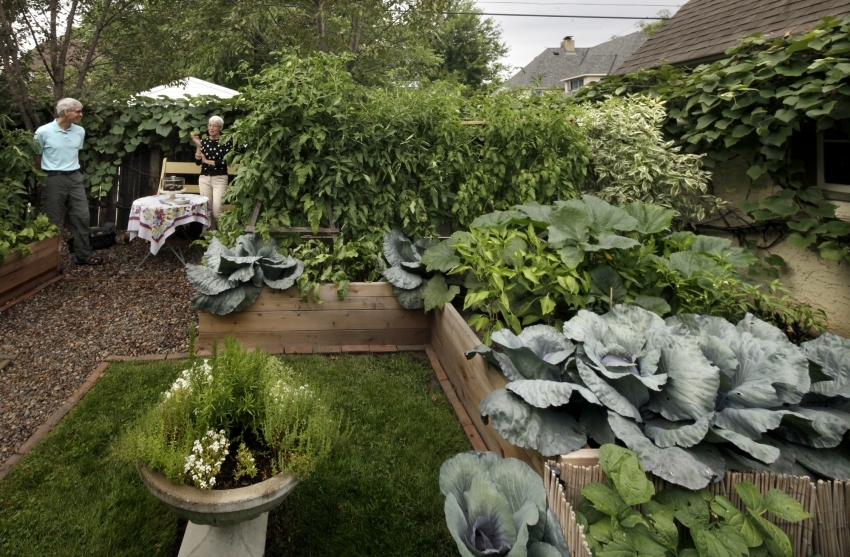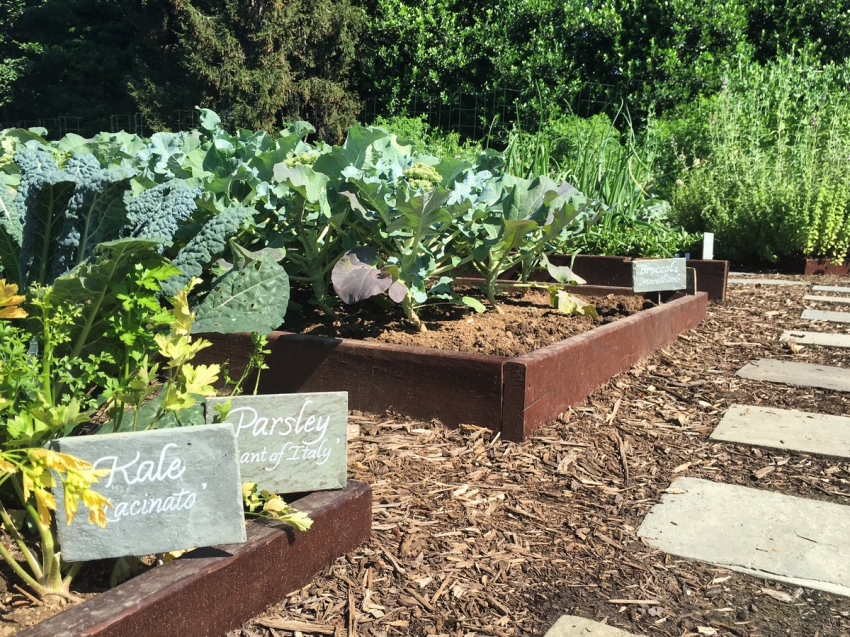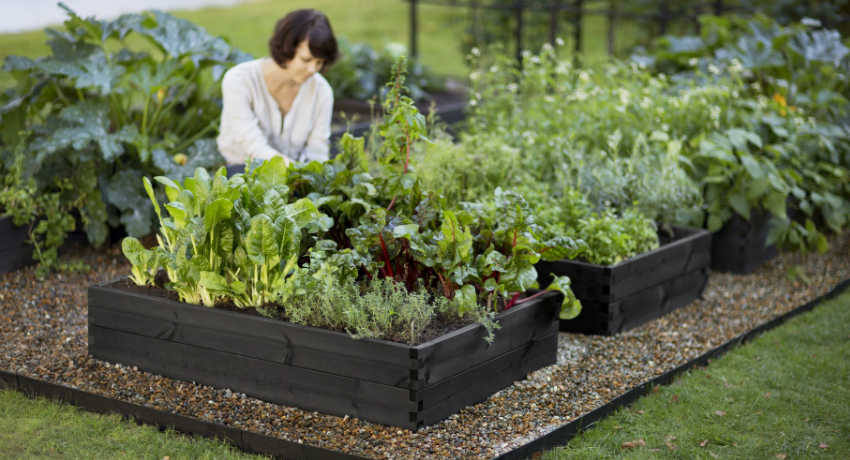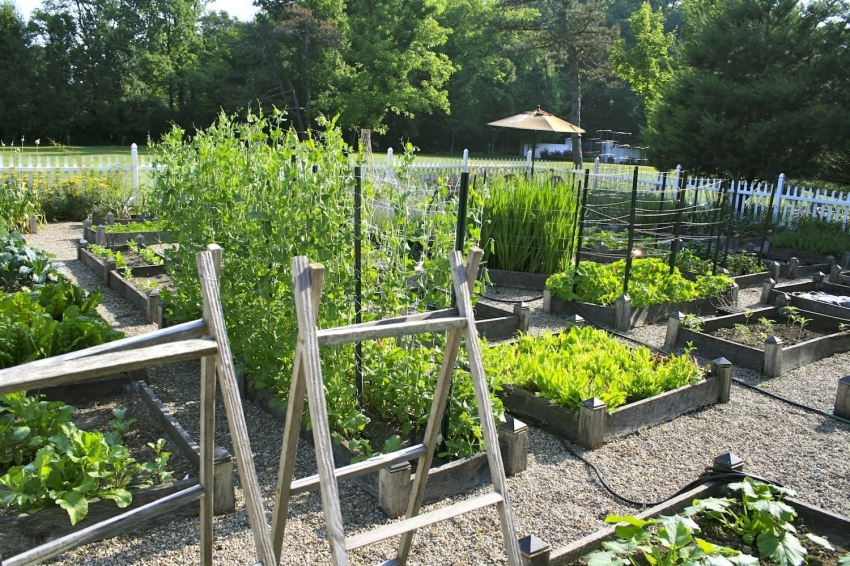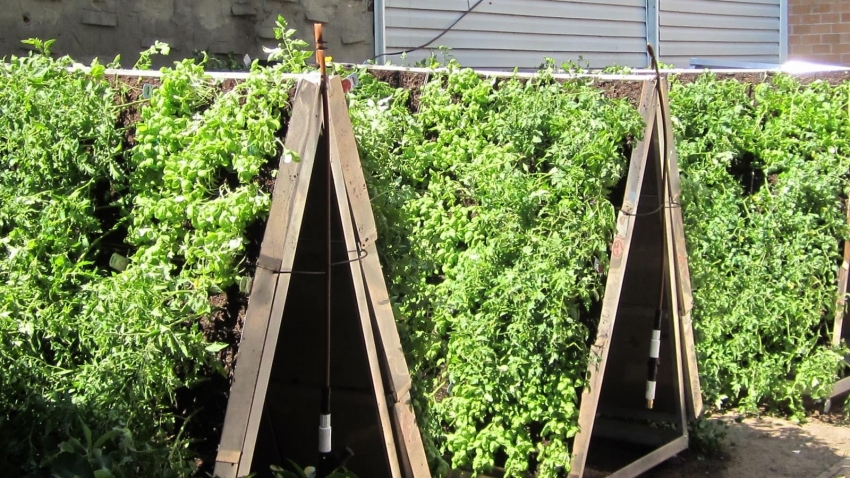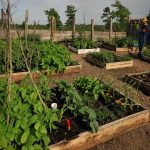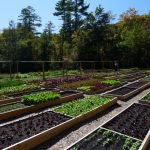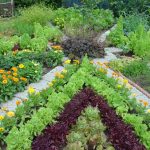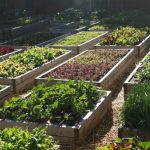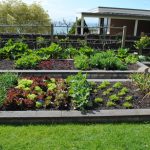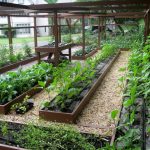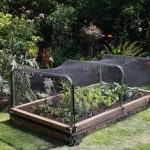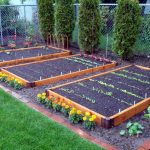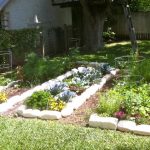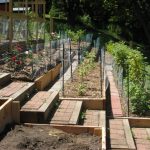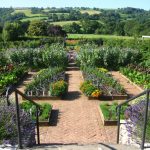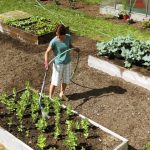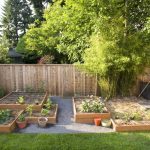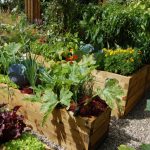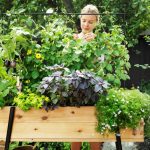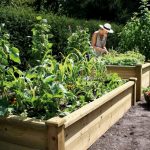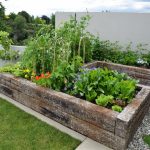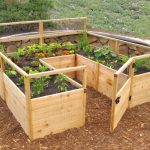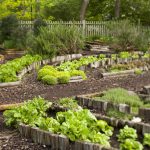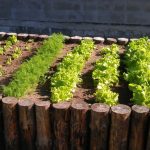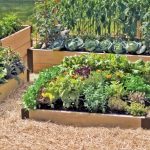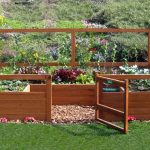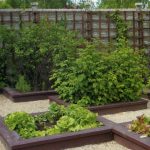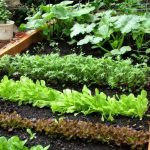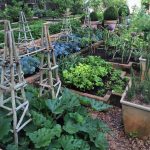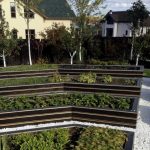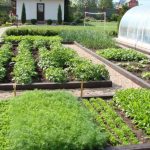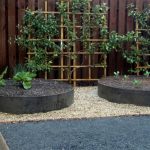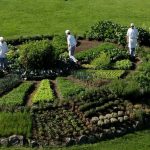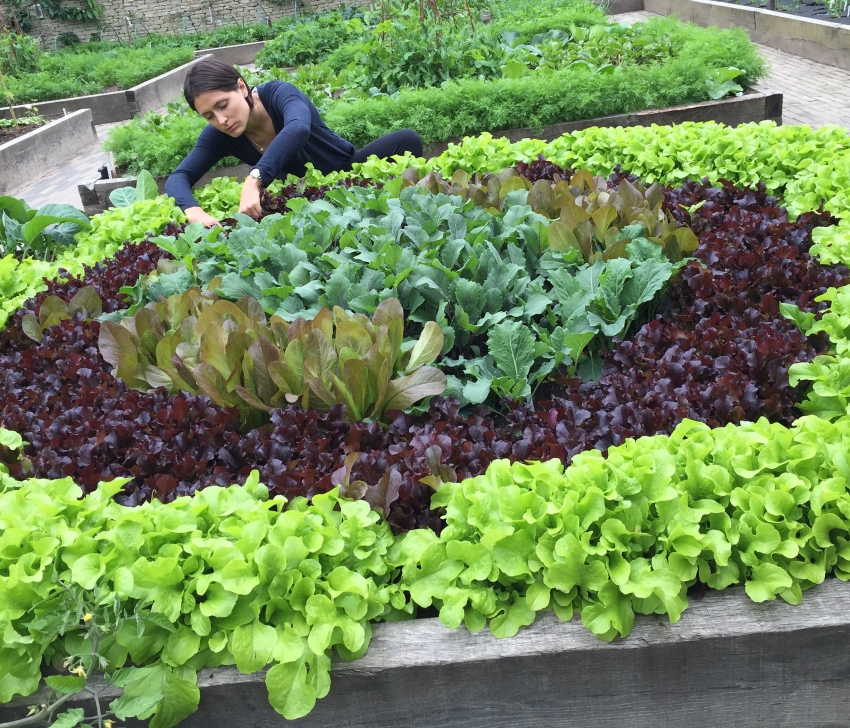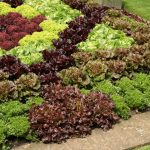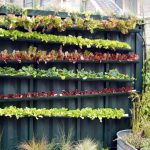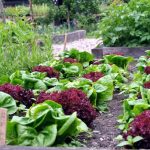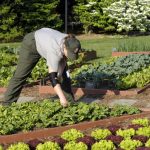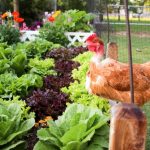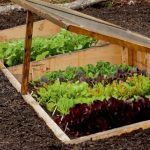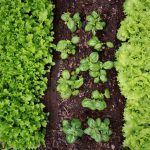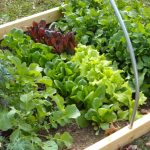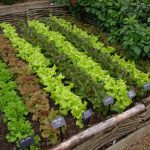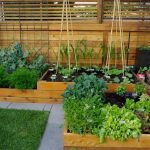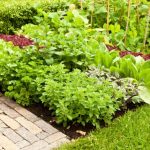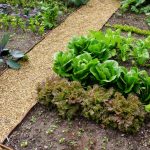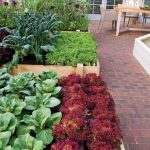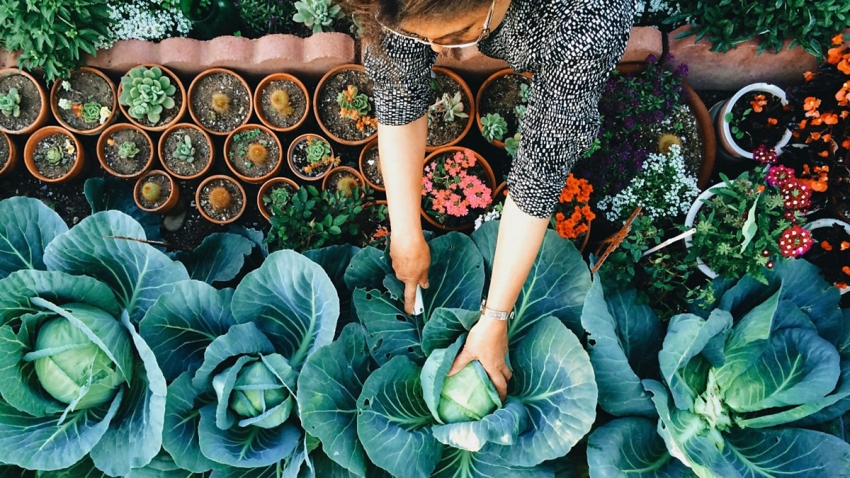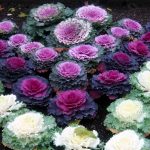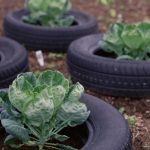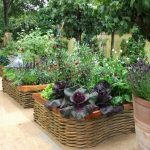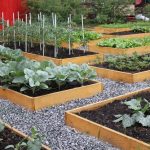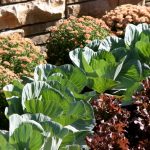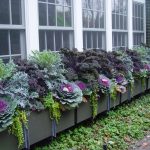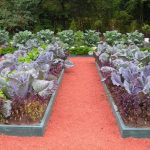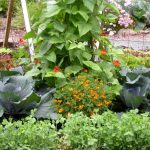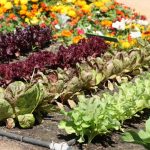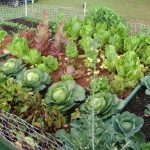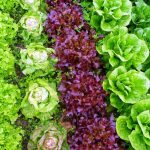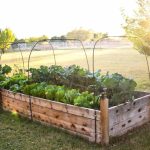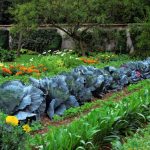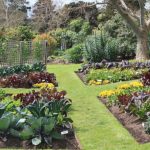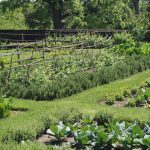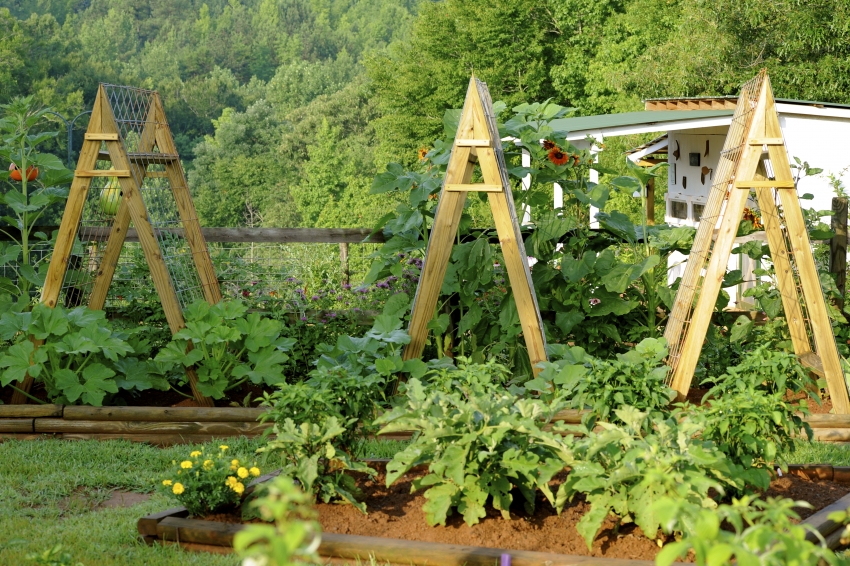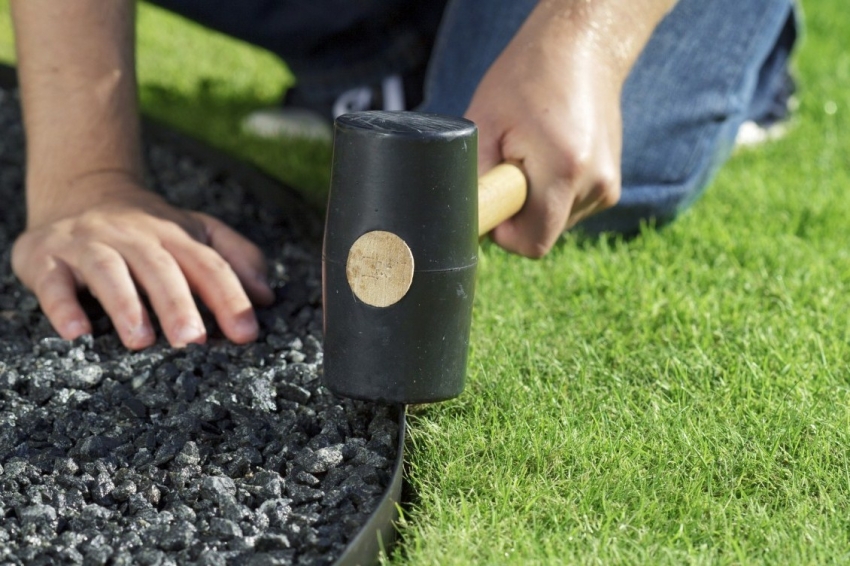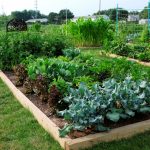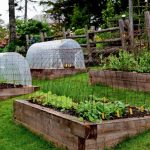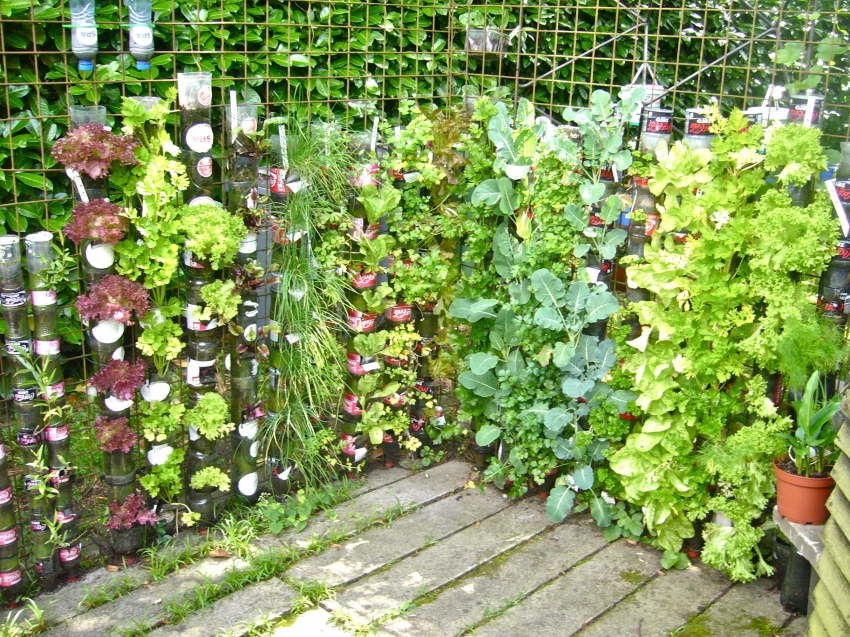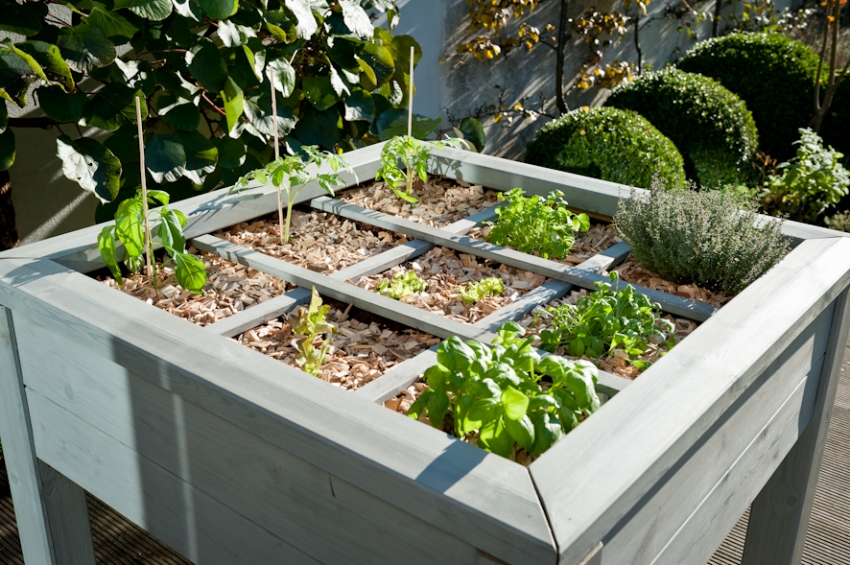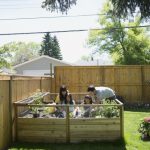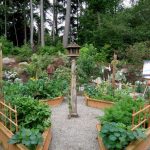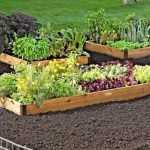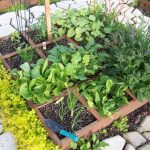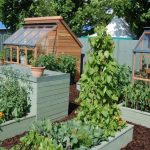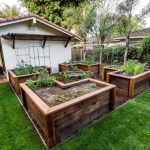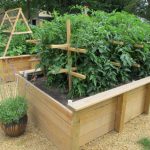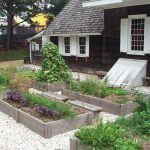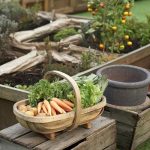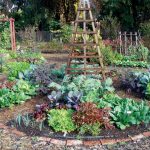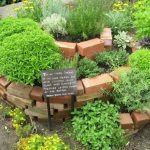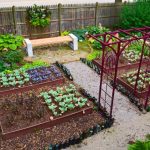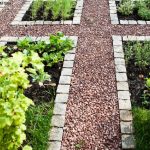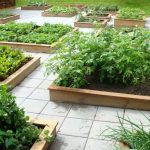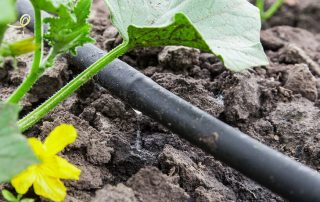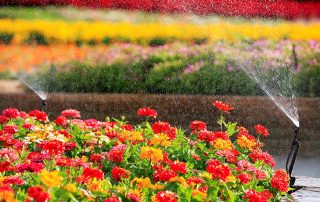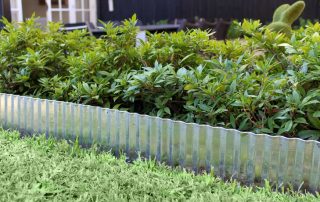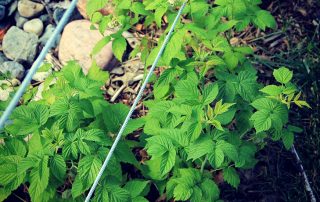From this article, you can learn how to create beautiful beds in the country with your own hands: photos of successful options that can be used as inspiration, instructions and design rules, as well as the manufacture of structures for growing vegetables and herbs on the site. The text sets out the basic principles of design development, taking into account the landscape features of the site, advice on choosing crops and creating a decorative design.
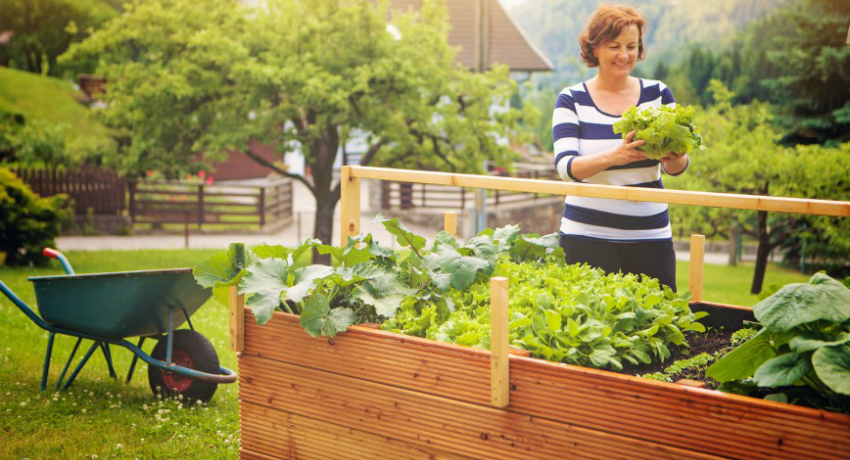
Beautiful do-it-yourself beds will not only decorate the site, but also help make the planting more organized
Content [Hide]
- 1 Do-it-yourself beautiful garden beds in the country: photos and design recommendations
- 1.1 Principles of creating garden beds: an ecological and traditional approach
- 1.2 Recommendations for the layout of the beds in the summer cottage: photos and design rules
- 1.3 How to make beds in the garden: photos of the correct placement options
- 1.4 Do-it-yourself garden beds in the country: photos of successful solutions
- 1.5 How to make a beautiful salad garden
- 1.6 Creating beautiful beds in the garden: photos of unusual solutions using cabbage
- 2 How to make beautiful beds in the country: photo examples of decorative fences
Do-it-yourself beautiful garden beds in the country: photos and design recommendations
A garden bed is a relatively isolated patch of soil where plants of a particular species are grown. Summer residents grow many crops that have similar cultivation characteristics or, conversely, contradict each other. By zoning the plot with the help of beds, you can separate incompatible plant species or combine those that are characterized by the same care system.

Correctly selected high beds rid the paths of excess soil and dirt
Vegetable crops, like flowers, need certain conditions. The shape and size of the beds can affect the degree of soil moisture, the intensity of the gas exchange processes. Even the species diversity of microorganisms that will live in the upper soil layer depends on the type of construction. In addition, it is important to know how to properly arrange the beds on the site. Photos of unusual beds from this article confirm that the design of the site can be both decorative and practical. In this case, you can create not only beautiful plantings, but also get a harvest from them.
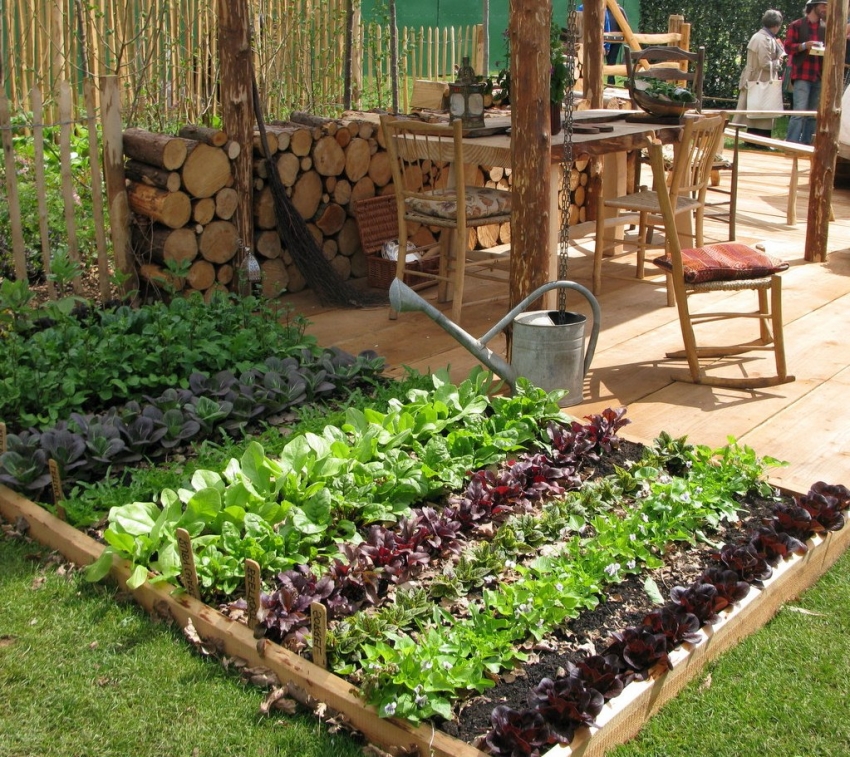
Small beds with aromatic herbs and spices can be conveniently located near the summer kitchen on the site
Note! Despite the same purpose of the beds, do not forget that some plants need a certain soil composition. However, other cultures may be less demanding. The same goes for soil consistency, light conditions and humidity. Inattentiveness to such nuances can lead to a decrease in the yield or its loss.
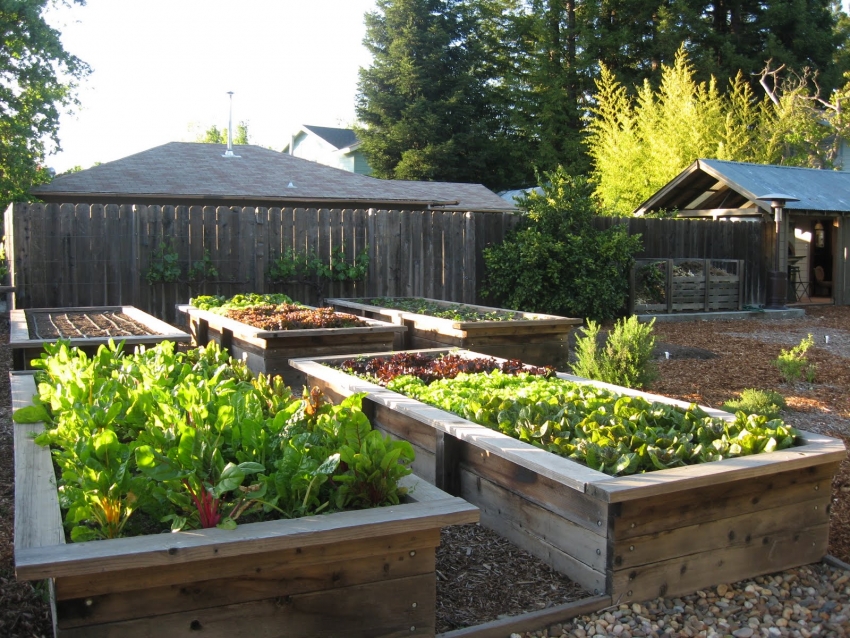
Special box for a warm bed, you can build it yourself or buy in the garden center
Principles of creating garden beds: an ecological and traditional approach
Summer residents practice two approaches to growing crops on the site - ecological and traditional. And one of them completely contradicts the other. The traditional method is gradually becoming a thing of the past. This principle of soil cultivation is labor intensive and damages the ecosystem. With the traditional approach, a person independently controls and regulates the state of the soil, as well as all the processes taking place in it.
The traditional farming principle includes:
- treatment with herbicides;
- digging up the soil twice a year (in autumn and spring);
- the use of fertilizers in large quantities.
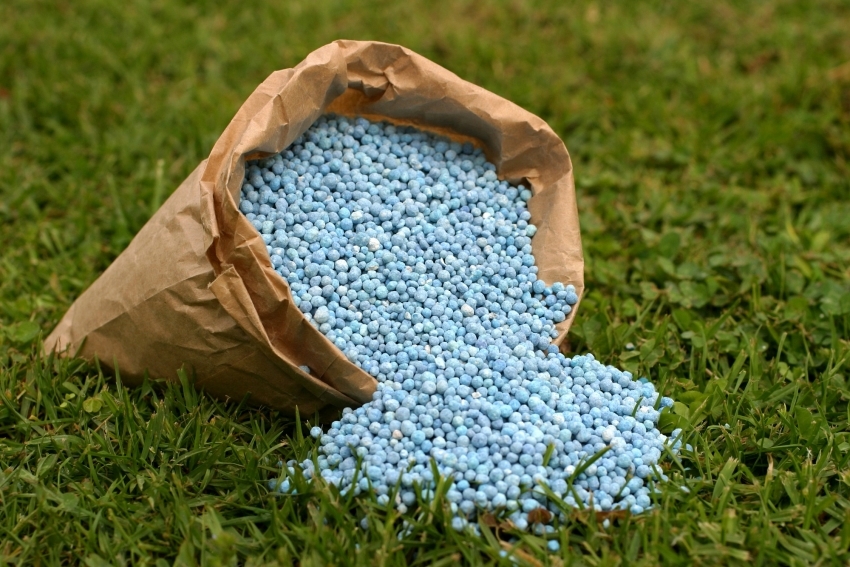
The traditional method of tillage requires an annual application of chemical fertilizers, which negatively affects the quality of the crop.
As a result, beds cultivated in this way are deprived of their natural capillaries. Microorganisms living in the soil are gradually dying off, and the harvests are decreasing.
The ecological approach to the arrangement of beds in the country with their own hands refers to natural farming. This principle is based on the natural self-healing properties of the soil. At the same time, a person extremely rarely interferes with the natural processes taking place in the beds. Digging, as a method of preparing the soil for planting, is abandoned. Instead, surface loosening is used. The same goes for weeding, instead of which mulching is carried out.
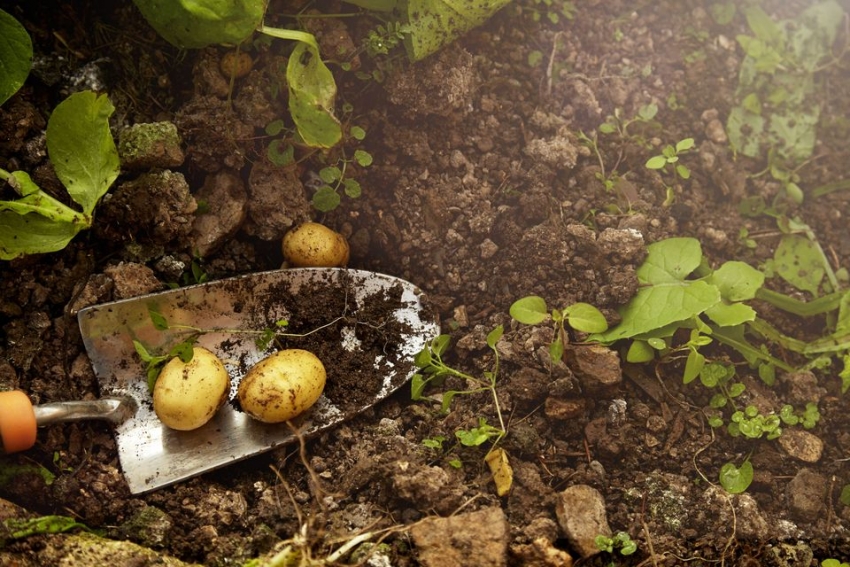
The yield grown according to ecological methods is usually lower than that of traditional ones, but the quality of vegetable crops is several times higher.
The ecological principle of agriculture preserves the natural properties of the soil, which independently restores its structure due to the increased number of capillaries, plant roots, insects and microorganisms. Gas exchange processes are improved and, as a result, a sufficient amount of nitrogen enters the roots of crops in a natural way.
Note!With an ecological approach, the use of chemical fertilizers is absent or minimized. Modern methods of creating beautiful beds in the country are built on this principle.
Recommendations for the layout of the beds in the summer cottage: photos and design rules
On the network you can find a large number of photos of beautiful beds and flower beds, every summer resident can create such a design with his own hands. The secret lies in planning the future garden.
Before starting work, it is advisable to take into account some of the nuances:
- compatibility of crops that will be planted nearby - some varieties of plants can have a positive effect on others, and some of them can be harmful. It is necessary to carefully study the issue of compatibility of crops that will grow in the beds;
- multilevel planning - the correct placement of plants in height will provide each type of crop in the garden with sufficient sunlight. For example, the tallest stands are best placed on the north side. Gradually approaching the south, the height of the plants decreases, as the amount of light increases;
- landscape features of the site - if the beds are located on a slope, there is a risk of washout during heavy rains. To prevent this, it is recommended to organize box beds on the site or place seedlings in special boxes. In such conditions, neat small-width beds can be made by placing them across the slope. Due to this, water will accumulate in the aisles and the need for additional watering will be minimal;
- yield - each vegetable has its own yield.This indicator can be used at the planning stage to find out how many beds and their size should be in order to obtain a certain amount of harvest.
Related article:
Do-it-yourself beds are not like everyone else: interesting ideas for country design
Interesting ideas for decorating a summer cottage and a greenhouse. The use of scrap materials to create unusual beds.
How to make beds in the garden: photos of the correct placement options
At the planning stage, the type of beds, the nature of their placement on the site and the dimensional parameters of the structures are also selected. The choice is based primarily on the characteristics of the soil, the specifics of the plants that will be grown and the presence of buildings on the territory.
Useful advice! In order not to puzzle over the design for a long time, you can use your favorite photos of summer cottages with beds and lawns from gardening magazines as a basis from which the design of the garden will be based in the future.
Guided by magazine photos of beds in the country or pictures from the Internet, it is advisable to draw up a plan for the future garden on paper in advance and use general recommendations for creating optimal designs:
- raised beds that do not have a frame in the form of a box are recommended to be built in areas with black soil. In this case, the purchase of soil is not required;
- the construction of high beds can be considered as an analogue of flower beds. They look decorative and at the same time are able to provide plants with protection from rodents;
- heat-loving plants need special conditions. For their cultivation, the construction of warm beds will be required. This version of the products will be optimal if the site is located in a region where a climate with low temperatures prevails;
- if the summer cottage is located in an arid region of the country, it is recommended to plant plants in pits;
- low-lying areas and areas with clay soils are best used to organize high beds;
- areas of the site that are in the shade are good for growing greenery;
- often come across in the network photos of beautiful beds near the wall. It is allowed to place structures along the walls of stationary structures, for example, a house, a summer kitchen, a shed, a gazebo or a garage, but with one condition - the rows should be placed on the south side. At the same time, the walls will protect the plants from the wind.
Do-it-yourself garden beds in the country: photos of successful solutions
Taking into account the general design principles, it is possible to evaluate a plot for organizing a garden and plan not only the shape and type of beds, but also the dimensional parameters.
General standards for the dimensional parameters of the beds:
- Height - an indicator within 40-60 cm is considered optimal, if we take into account that the beds need regular weeding and watering. For these works, the specified height is considered the most convenient.
- Width - the maximum allowable figure is 1.2 m. Otherwise, seedling care and soil cultivation will be extremely difficult.
- Aisle width between plantings - the minimum allowable value is 0.3 m.
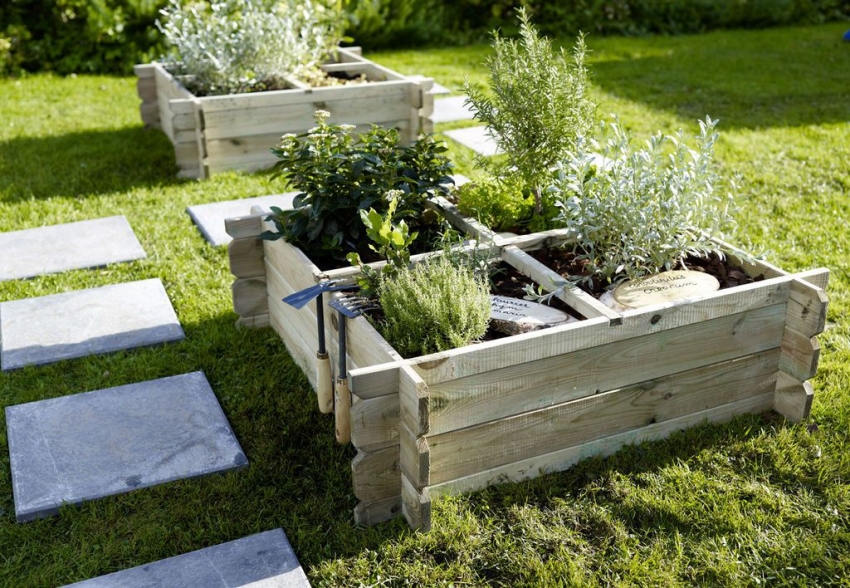
Using a high box instead of a traditional garden bed, you need to carefully consider laying the drainage system to release excess moisture
Note!If supposed construction of bedswith a frame, at least 0.6 m should be left between the structures.With such a width, a wheelbarrow can easily pass along the aisle, which can be used for harvesting, transporting fertilizer, etc.
How to make a beautiful salad garden
Each plant is unique and beautiful in its own way. Combining certain crops on the same bed will create an amazing plant design. The composition can consist not only of vegetables, but also of herbs and flowers.Certain plant species are able to provide vegetable crops with protection from pests and diseases.
Salad is a frequent visitor to beautiful photos, many summer residents know how to make beds in the garden using this plant. It is decorative and comes in a wide variety of varieties. This type of greenery can have different leaf shapes and even colors.
Recommendations on how to decorate a garden beautifully with a salad:
- The Zabava salad variety is suitable for creating contrasting accents in the garden. Its leaves are red in color and combine well with other plants.
- The Assol variety is a heady variety of lettuce. This version of the plant has a green color and a red border around the edges of the leaves. The high decorativeness of the variety allows you to use it as a garden decoration.
- These varieties can be combined with vegetable crops. Successful combinations are obtained with cucumber, carrots, strawberries and radishes.
- All types of salad look spectacular next to basil or parsley.
Herbaceous beds need shade. By growing such crops, you can provide yourself with fresh greenery, and decorate the shaded areas of the yard where most flowers cannot grow.
Creating beautiful beds in the garden: photos of unusual solutions using cabbage
Cabbage is another variant of the plant, the beauty of which is not always appreciated by those who are unfamiliar with the peculiarities of its varieties. There are many technologies that describe how beautifully to make beds in the garden, photos of structures planted with cabbage look no worse than flower beds in the yard.
There are several varieties of red cabbage on sale that can be successfully used to create a decorative garden bed. These varieties include "Mikhnevskaya Krasavitsa", "Langedeiker", "Rodima F1" and many others. In addition to external beauty, they will give a generous harvest at the end of the year.
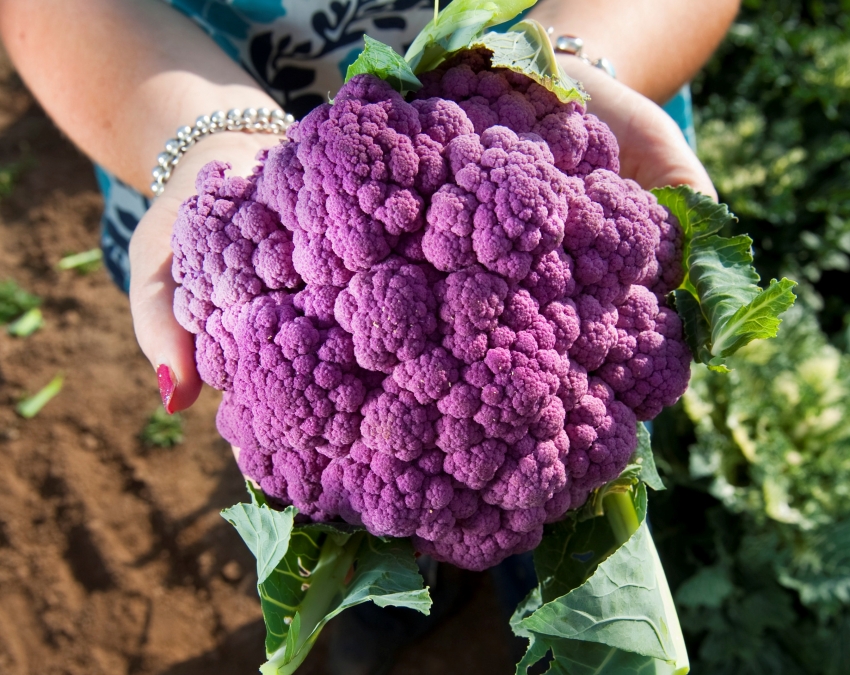
Purple Queen cauliflower will be a real gem suburban area
Cabbage variety "Amethyst F1" has a stunning purple coloration, which will highlight dull green plantings and make them attractive. There are also unique varieties. For example, "Cheddar F1" cauliflower is colored orange and can easily compete with flowering plants in terms of decorativeness. In the vicinity of cabbage, you can also settle other crops: dill, beets, onions, celery.
Helpful advice! Cabbage can also be used to make a frame in the garden beds with your own hands, photos of plantings in a white cabbage fence look attractive, while creating a unique structural design.
How to make beautiful beds in the country: photo examples of decorative fences
Living fences are the most environmentally friendly way to decorate beds in a decorative garden. Differences in plant structure or color can be effectively played around in design by creating a natural frame around the plantings. This technique is also used to decorate the garden with geometric patterns or rows of different heights and colors.
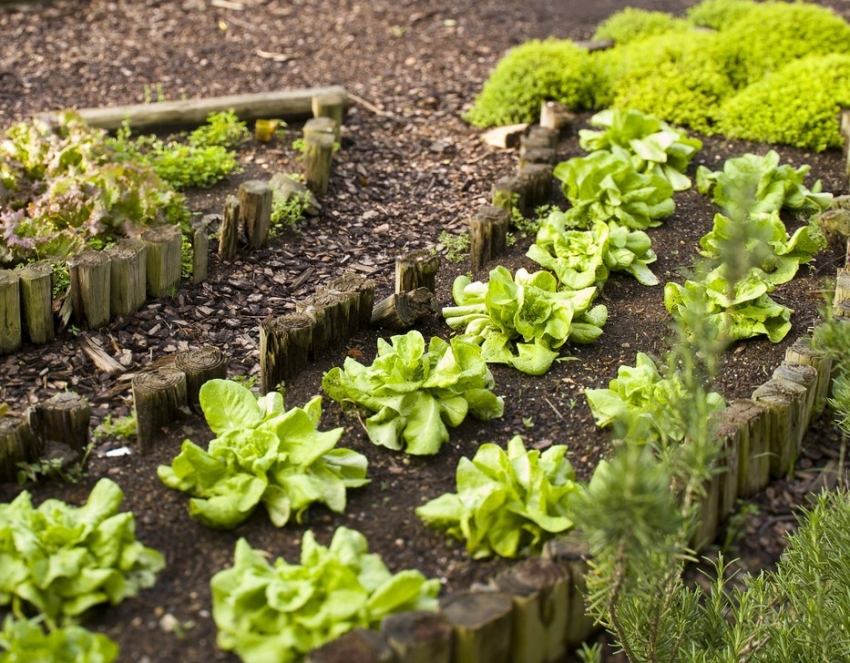
Live fences can be organized by planting pegs of fast-growing trees - cherry or willow at the edges of the beds
The frames for the beds can be made by hand from any available means. For these purposes, a vine is suitable, plastic, stone, wood. Even the use of beds without framing is allowed. In this case, the design is based on the unusual shape of the structure.
How to arrange a garden bed: photos and tips for using lawn grass
It is best to use a lawn to create a natural border. Green grass is easy to handle, obedient and allows you to create even the most complex shapes on the site. The result looks amazing, giving a special design to the area.
This technology also has disadvantages:
- The lawn grass grows quickly and spreads well. Such a fence needs regular maintenance, otherwise the lawn will spread to the garden. To prevent this, it is recommended to do weeding from time to time.
- A green lawn does not provide protection against pests and rodents, which can seriously damage crops.
- A bed framed in the form of a lawn grass loses its shape over time. It is necessary to monitor its position and, if necessary, correct.
Helpful advice! In order to prevent pests from entering vegetable crops, you can buy beautiful plastic beds. These products are strong, practical and durable. On sale there are decorative options that imitate wood or stone.
The advantages of framing from lawn grass include excellent decorative characteristics, a simple system of organization and further maintenance.
Popular options for decorating the beds
Options that do not have a frame look interesting. Such beds have a beautiful shape, they are raised above ground level. Crushed stone, stone or sawdust is used to decorate the passages between them. The last option can be dug up in a year and you can get fertilizer for the soil. To prevent the edges of the beds from falling, it is not recommended to raise them more than 20 cm above ground level.
Low-growing shrubs will be an excellent substitute for artificial materials. Large vegetables (for example, cabbage) or herbs are planted using a similar technology. But in this case, the beds will need regular maintenance. For the organization of a living fence, boxwood shrubs, apical pachyzanthra or lavender are suitable. These plants can be successfully used as frames, but given their high cost, most summer residents use them to decorate the beds located at the front facade of the building.
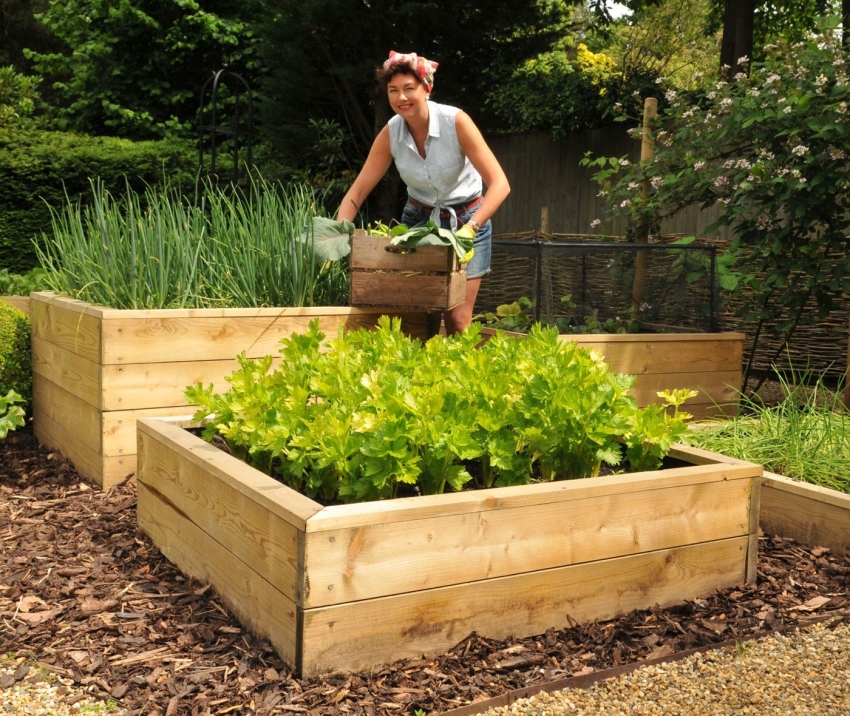
Before planting vegetable crops, it is necessary to take into account the future height of the plants so as not to create shaded areas in the beds.
The design of the beds can be very diverse, it all depends on imagination. To diversify the appearance of the plantings, you can add flowers, for example, marigolds, to vegetables. Their flowers, which are bright orange in color, will dilute the boring greenery and protect plants from aphids.
Glass or plastic bottles, pieces of wood, pieces of slate, bricks, ceramic tiles and other improvised materials that could remain on the site after construction or repair can be used as decorative frames.
